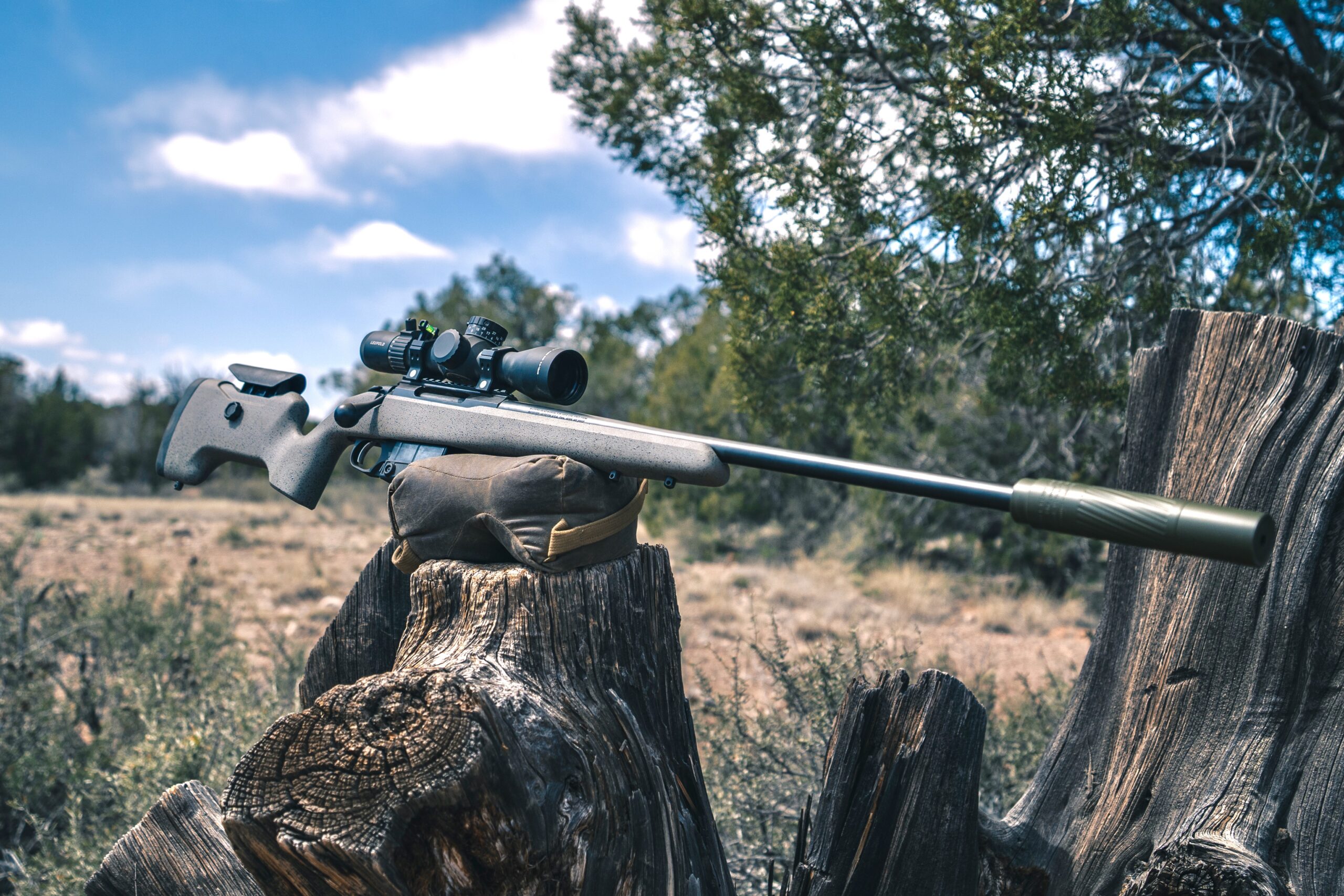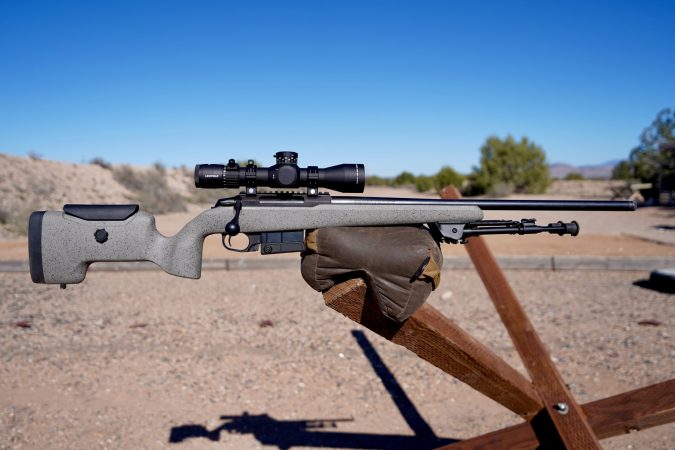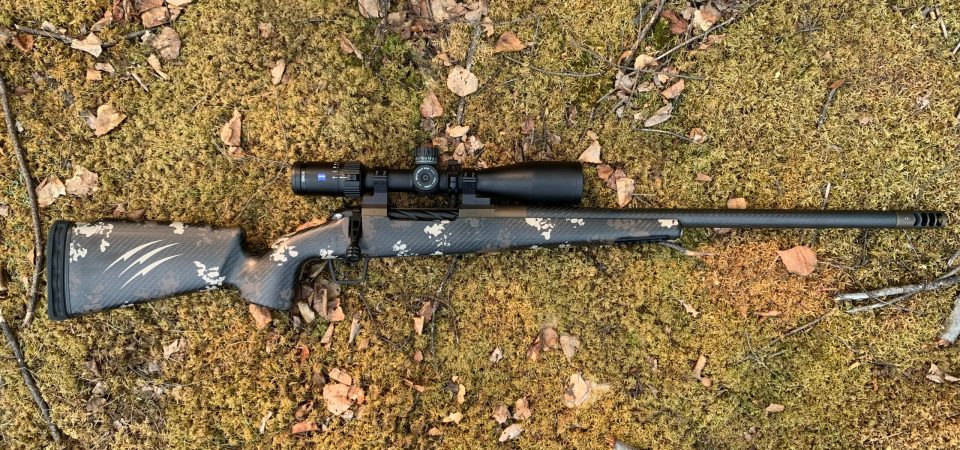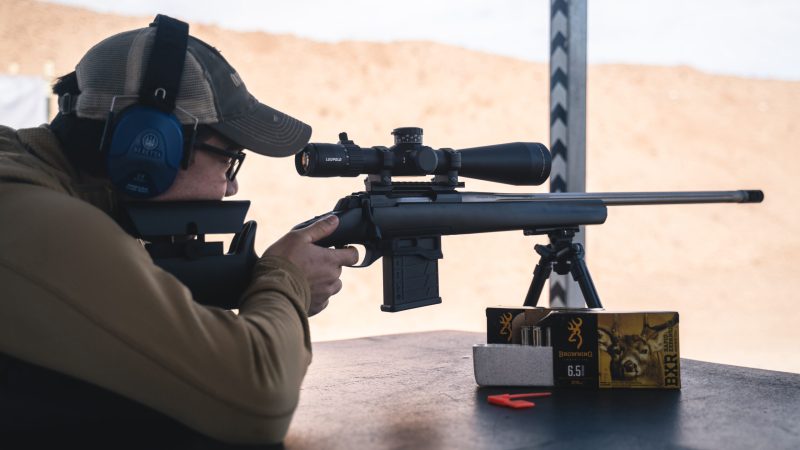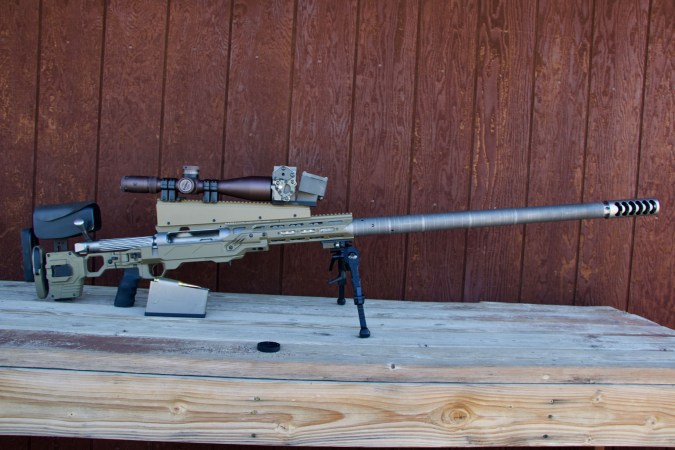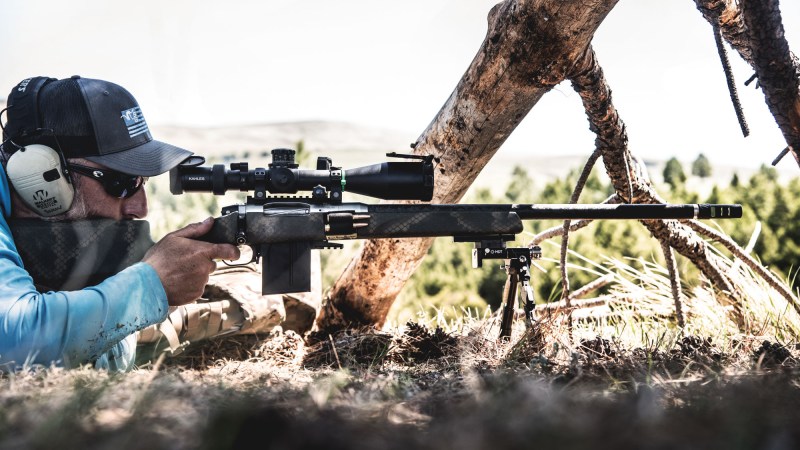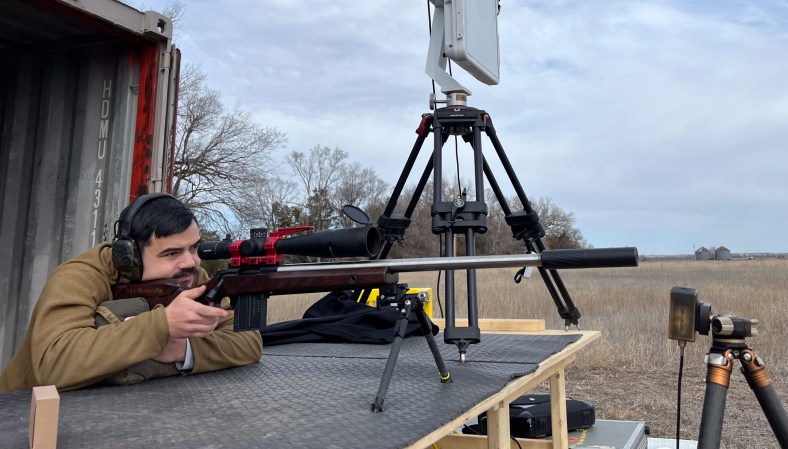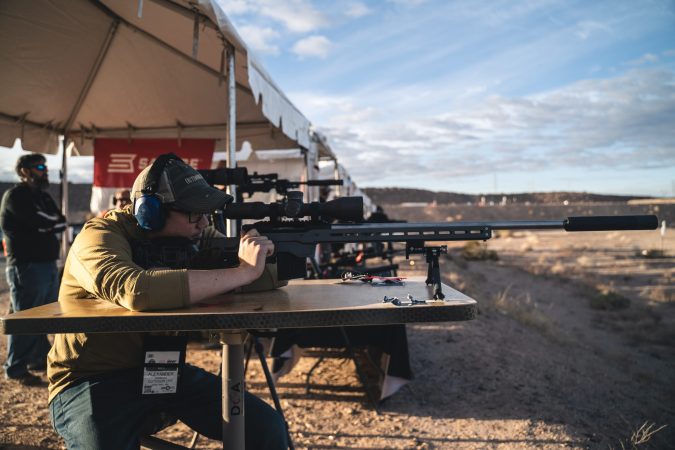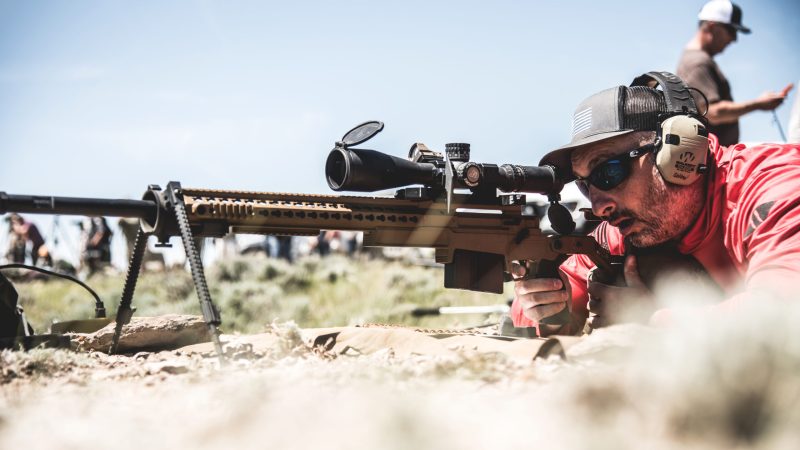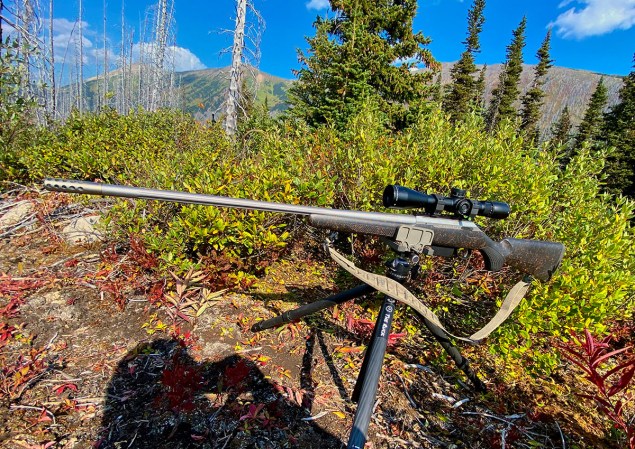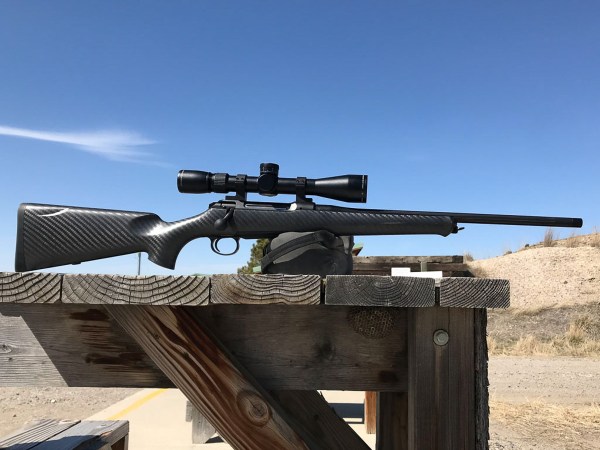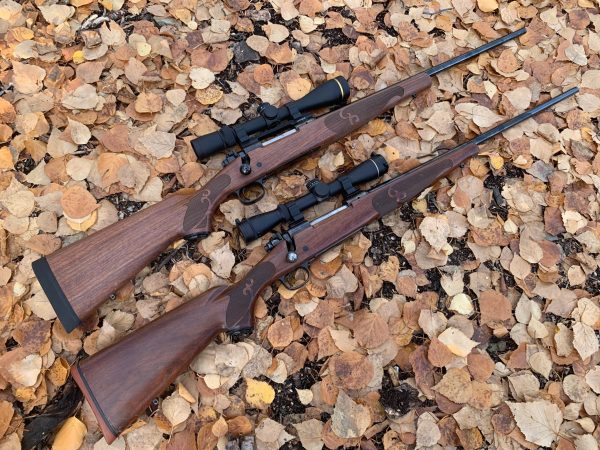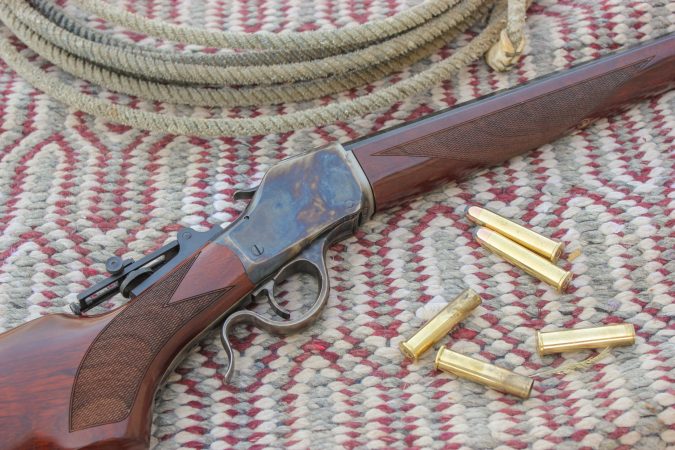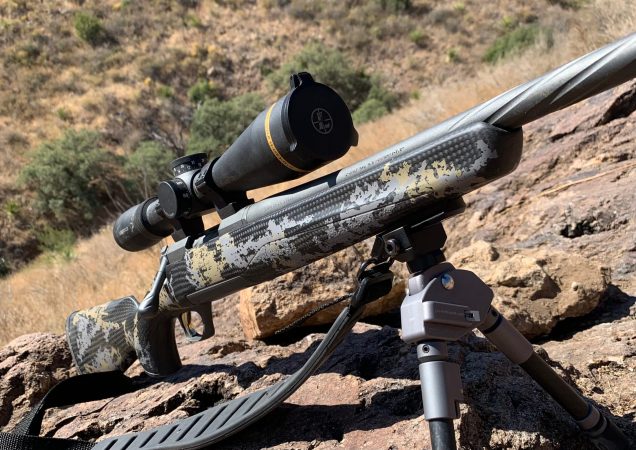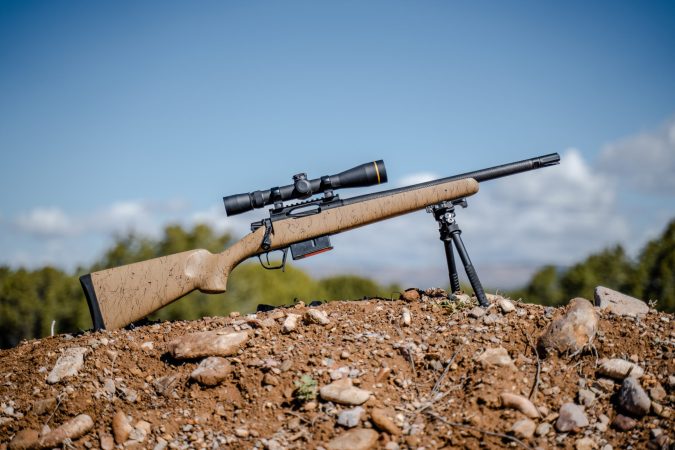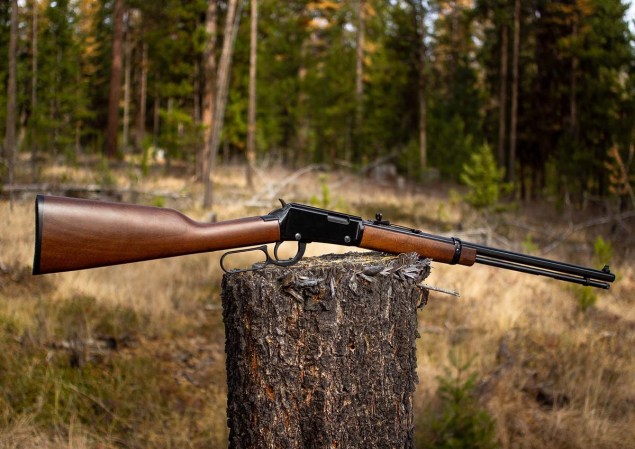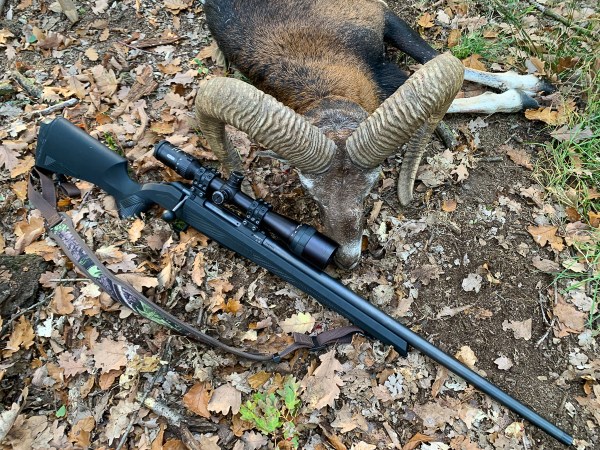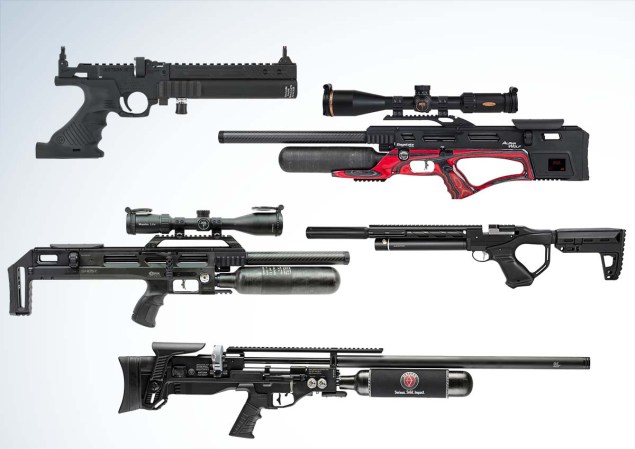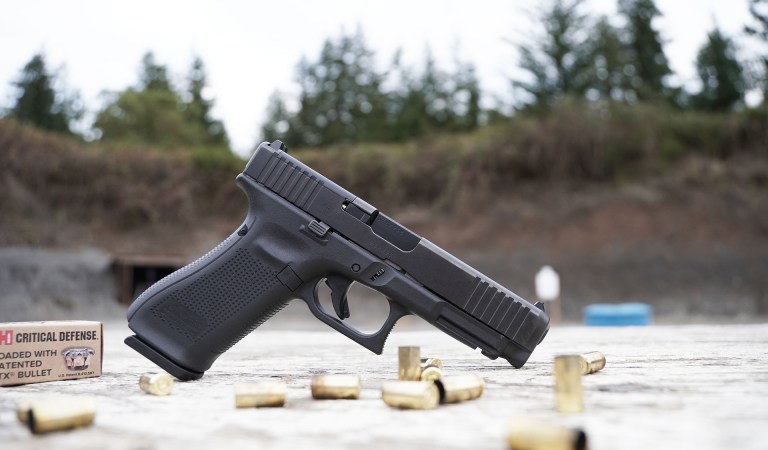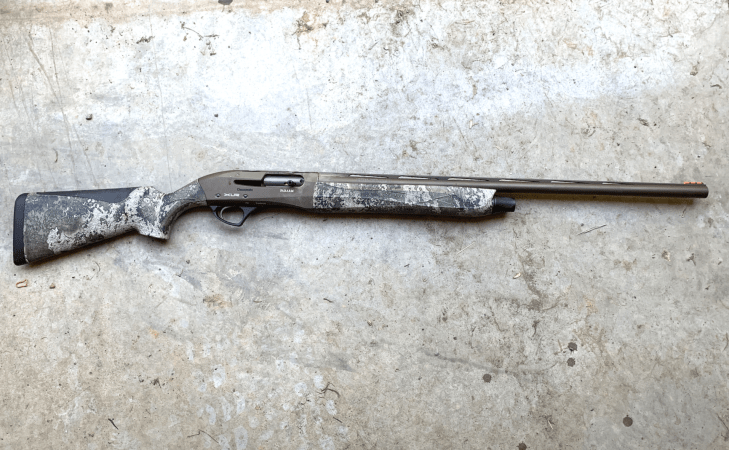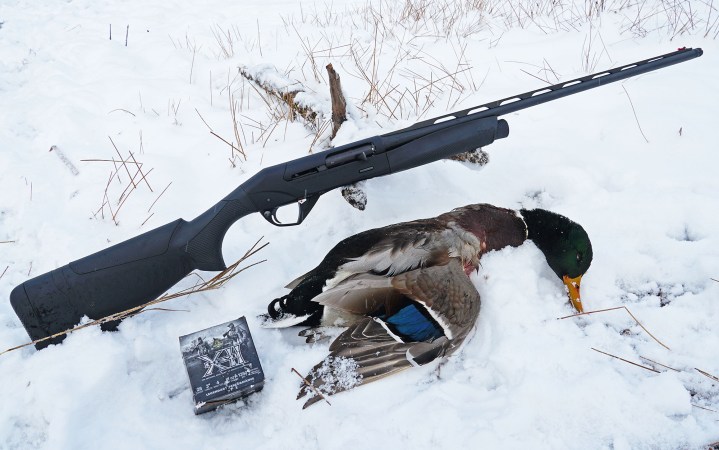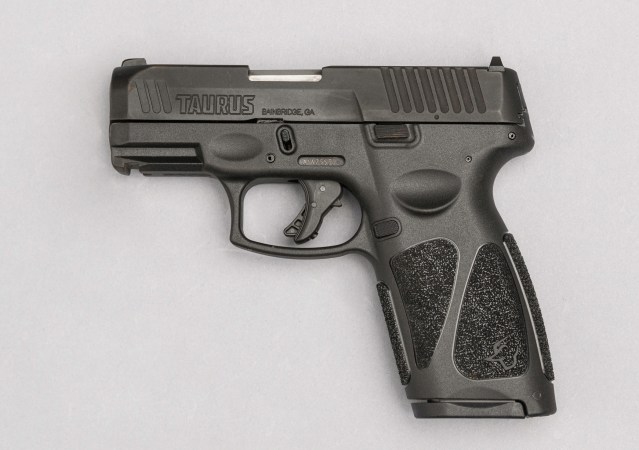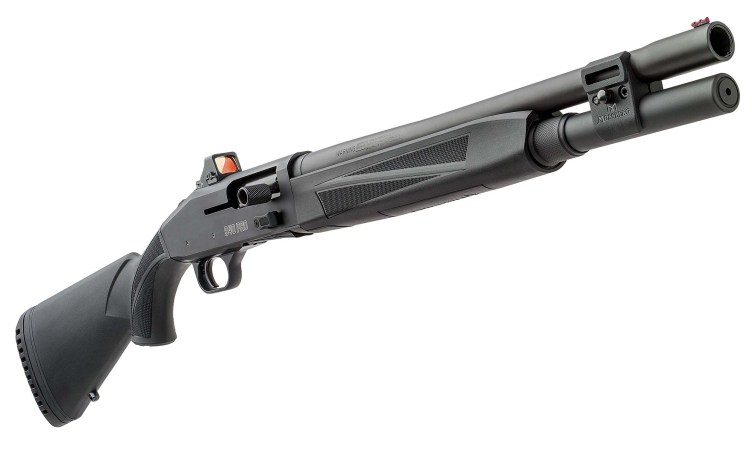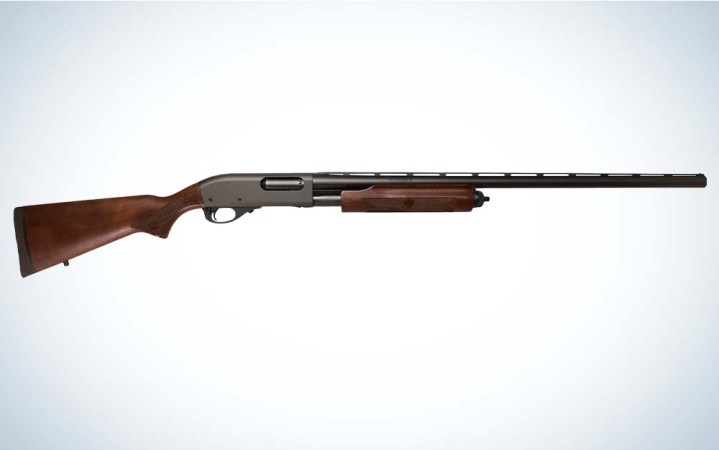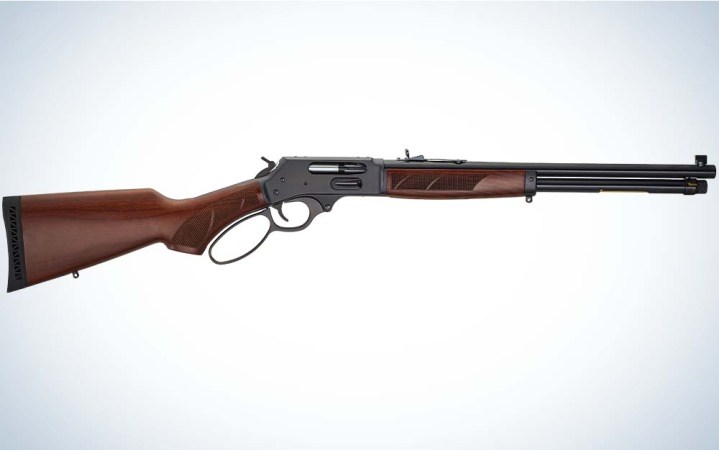We may earn revenue from the products available on this page and participate in affiliate programs. Learn More ›
It’s hardly a secret these days, but Tikka makes some of the best and most accurate rifles for the money. I’ve lost count of how many Tikkas and Sakos I’ve shot over the years, yet I’ve never had a bad experience with any of these kissing cousins from Finland. (Such as the Sako TRG 22 A1 I recently reviewed.) The Tikka T3x UPR I’ve been shooting for the last few months maintains that streak.
In fact, the T3x UPR is my favorite Tikka to date thanks to its blend of precision, ergonomics, and workmanship, and how smoothly and reliably it runs. It is well-suited to many tasks, but what prompted me to try it is the reputation it has developed as an out-of-the-box winner in the factory division of the NRL Hunter series.
If you’re not familiar with NRL Hunter, you just need to know that it’s a precision rifle competition where shooters start from a blind position and must find, range, and engage targets on the clock using equipment that is suitable for big-game hunting and doesn’t exceed specified weight limits. In the case of the “factory” and “light” divisions, that figure is 12 pounds and includes the rifle, optic, bipod, and other accessories one might mount to the gun. This is in stark contrast to the rifles shot in long-range games like PRS, various ELR matches, and sniper/field competitions where the guns often weigh twice as much (24 pounds) or more.
Tikka T3x UPR Specs
- Action: Two-lug bolt
- Stock: Glass fiber with adjustable cheek piece
- Barrel: 23.7 inches, 1:8 twist, cold-hammer forged, threaded 5/8-24
- Chambering: 6.5 Creedmoor (tested), .308 Win., 6.5 PRC
- Capacity: 10+1 (short-action cartridges)
- Weight: 7 pounds, 14 ounces (measured)
- Trigger: Single-stage, user-adjustable
- Trigger pull: 3 pounds 13 ounces (measured)
- Length: 43.6 inches
- Price: $1,299
Set Up to Win
- Scope: Leupold Mark 5HD 3.6-18×44
- Rings: Hawkins Ultra-Light Tactical with offset level
- Bipod: Harris Type S
- Suppressor: Silencer Central Banish Backcountry and TBAC Ultra 7
Tikka T3x UPR Highlights
The Tikka T3x UPR is a hard-working rifle that’s rugged and measures up against every metric we use to evaluate firearms.
Here are the CliffsNotes. First, it is amazingly accurate. With factory match grade and premium hunting ammo it averaged .649-inch five-shot groups, over 17 groups.
Next, it handles beautifully, whether shooting prone or from supported positions. Lastly, it operates in a bomb-proof manner. It doesn’t matter if you expose it to dust, mud, ice, or snow (all of which I did)—it runs flawlessly. There’s nothing finicky about it.
The T3x UPR Stock
The stock is what most distinguishes the T3x UPR from other models in the T3x line. All T3xs share a common two-lug action with similar controls and feed from detachable magazines. The barrels feature different contours and lengths, but all originate on Tikka’s excellent cold-hammer forging equipment in Finland.
UPR stands for “ultimate precision rifle” and that claim is what drove the stock’s design. It is made of a rigid and solid glass fiber material that is surprisingly light and is shaped and contoured with precision shooting in mind.
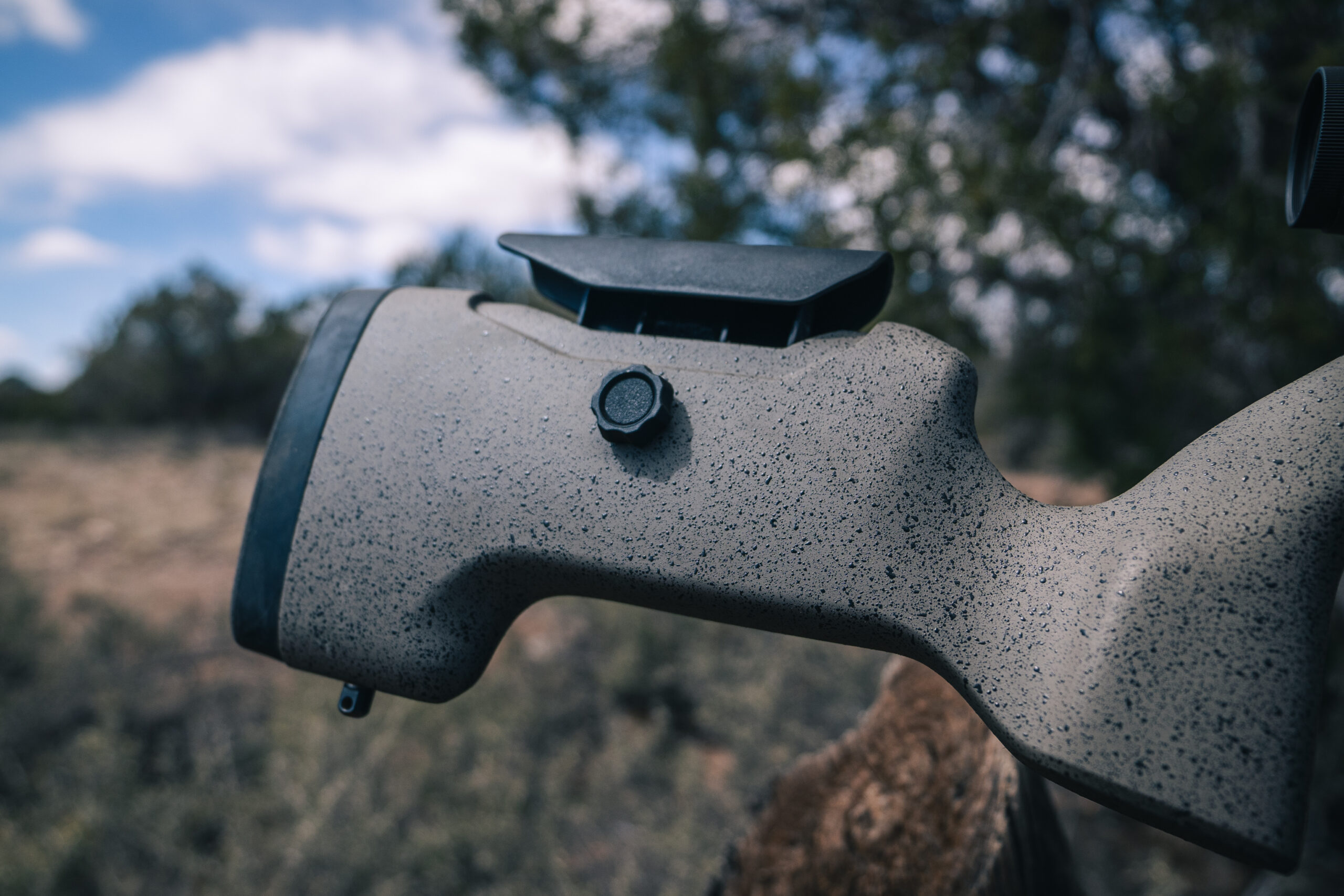
The stock weighs just 1 pound, 13 ounces, which is impressive since that includes the hardware for the adjustable cheek piece, three swivel studs (two on the fore-end and one on the rear), two QD sling cups, and the recoil lug, which is embedded in the stock just forward of the front guard screw.
While the T3x UPR isn’t currently offered in a left-handed configuration, the stock is symmetrical and therefore ambidextrous, making it friendly for shooters mounting the rifle on their left shoulder.
Recoil Lug
If you’ve ever taken a Sako or Tikka centerfire rifle apart you’ve likely noticed that it doesn’t use a typical Remington 700/Winchester Model 70 recoil lug, where the lug is machined into the action or is sandwiched between the barrel and action. This type of lug slides into a recess in the stock, helping the action and stock move as one under recoil and maintain their alignment from shot to shot.
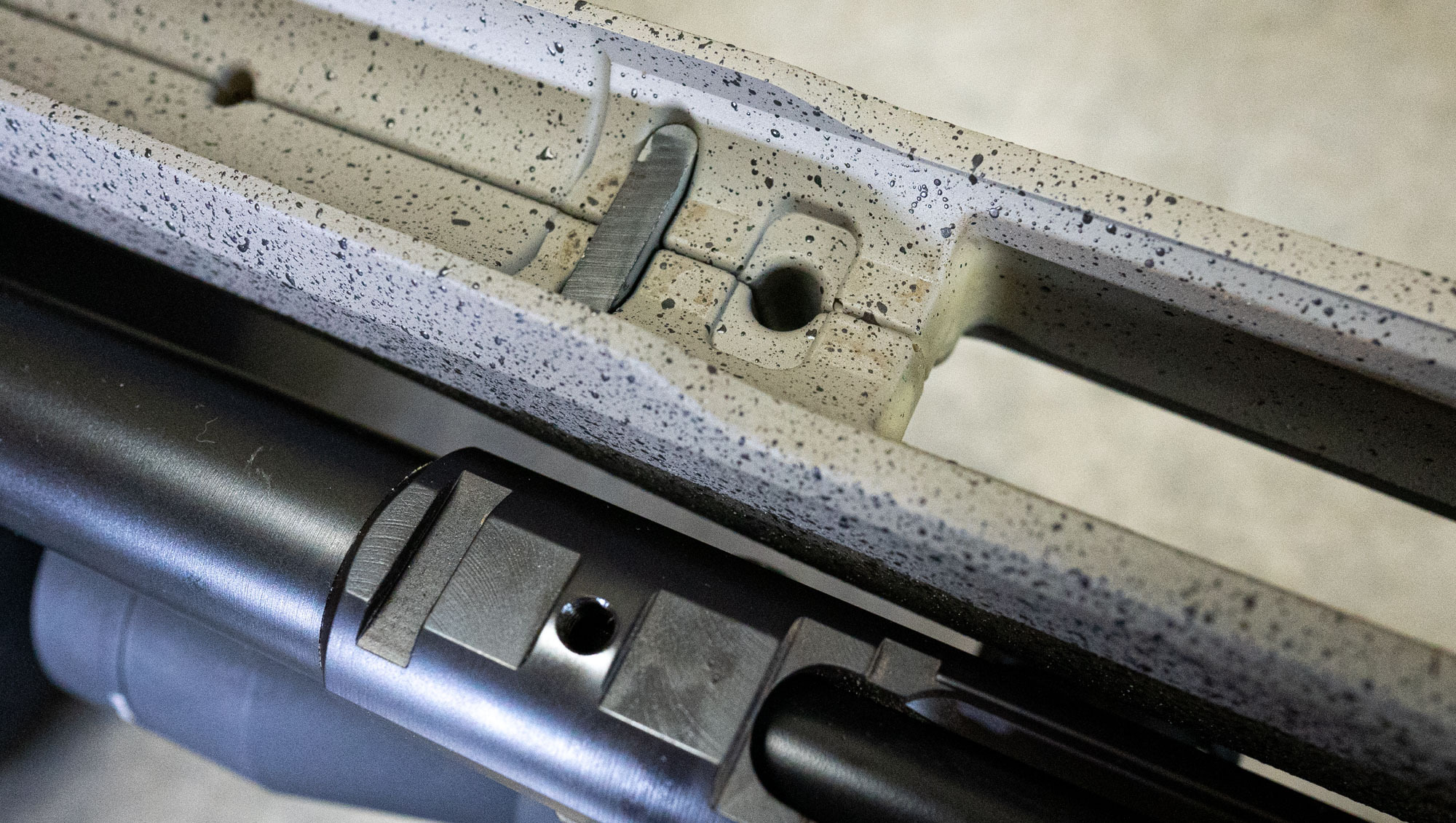
The design employed on Tikka and Sako rifles achieves the same goal but does so in the reverse manner. Rather than hanging below the action, the lug sits within the stock and sticks above the barrel channel. The bit that’s above the channel fits into a recess machined into the action. The amount of contact between the raised portion of the lug and the cut in the action isn’t much. The lug in mine extends a mere .087 inches above the stock while the cut it goes into is just .090 inches deep. Yet that amount of engagement was sufficient to help the Tikka T3x UPR deliver excellent accuracy over hundreds of shots.
Well-Proportioned Vertical Pistol Grip
The stock sports a nearly vertical pistol grip that swells to fill the palm of the hand but narrows at the rear, creating a recess for the meat of the thumb to nestle in. It gives the trigger hand full and even contact all the way around without any gaps—and without being unnecessarily bulky.
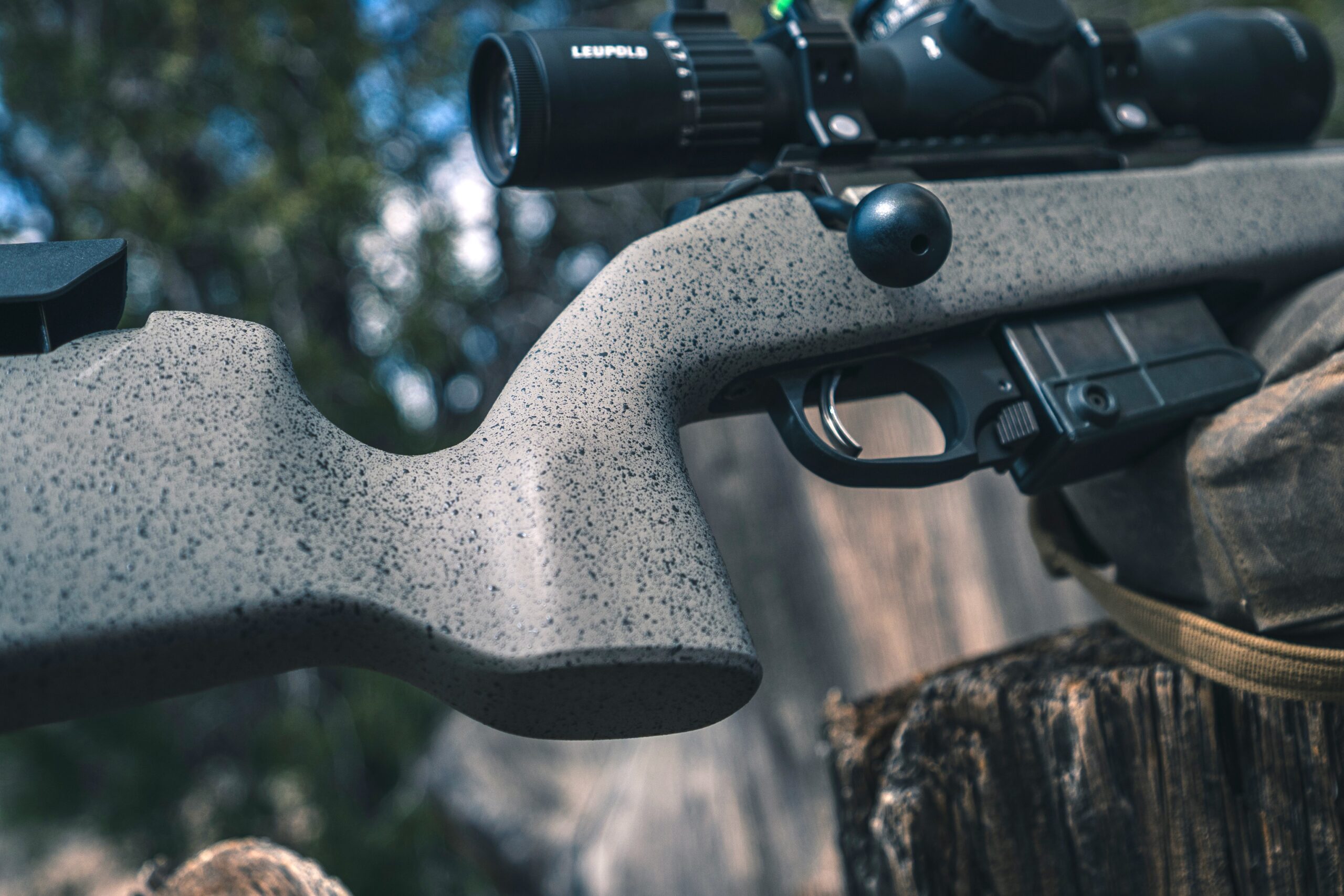
The configuration of the grip offers the shooter a lot of control, which translates to steadier holds and more precise shot placement.
The “desert sand” finish gives the surface of the stock a bit of texture that provides a secure handhold. A lot of high-tech carbon fiber stocks have slick finishes, which aren’t the end of the world from the standpoint of handling and marksmanship, but historically stocks have had grippy elements cut into or added to them since time immemorial for a reason—and the UPR stock gets solid marks in this category.
Broad Fore-end
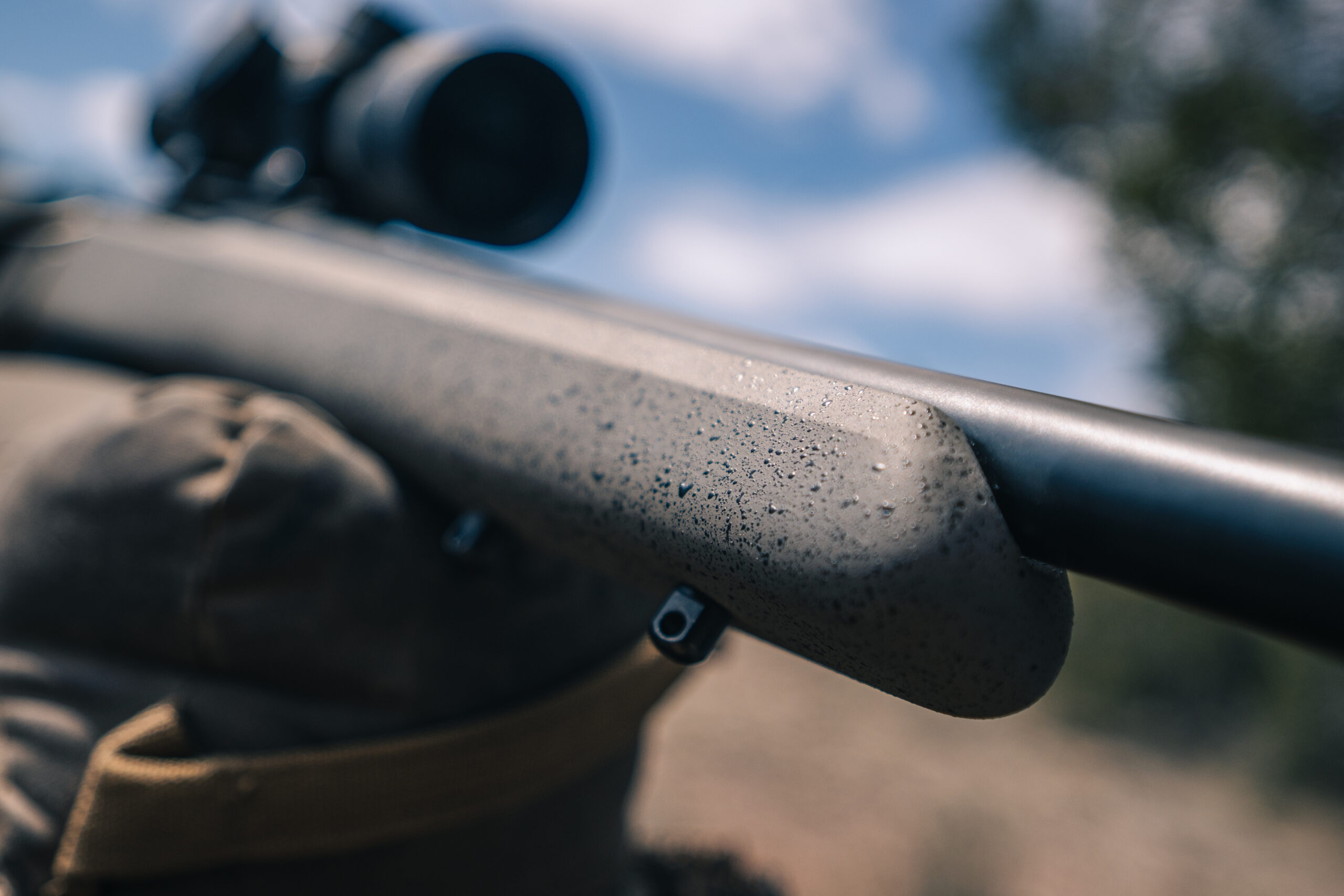
The fore-end has a flat bottom and is wide enough (1.75 inches at its widest) to allow for firm contact with a sandbag for positional shooting but narrow enough so that even shooters with smaller hands can get a good grip.
Butt Stock with Sniper Hook
The butt stock has a sniper-hook cut on its underside which can be employed a couple ways by the shooter. The non-trigger hand can put rearward pressure on the cut to solidify a position. The cut can also be used in conjunction with a sandbag to make larger changes in elevation without needing to adjust the bipod. It’s a valuable feature whose utility is only limited by the shooter’s imagination
The recoil pad is a medium-stiff chunk of rubber with a substantial surface area that does a good job mitigating felt recoil. The material is a bit tacky to the touch, which helps it stay in place when the rifle is snugged into the shoulder. But that level of grip can also cause the rifle to hang up on clothing or the strap of a backpack when attempting to mount the gun. It’s a common tradeoff and the T3x UPR, geared toward precision shooting, favors solid contact over snag-free shouldering.
Adjustable Cheek Piece
The benefit of an adjustable cheek piece is that the shooter can align their eye with the optic in a consistent manner, particularly when employing scopes that require extra clearance, which is often what long-range scopes (and their large objective lenses) require.
One common drawback with adjustable cheek pieces is weight. The hardware often adds the better part of a pound to the rifle. The system employed by the Tikka T3x UPR is ingenious in its weight-saving simplicity. The hardware consists of a couple pieces of polymer and a basic thumbwheel screw so you can loosen, adjust, and re-tighten the cheekpiece. It all fits into a slot molded into the stock. In total, the hardware came to 2.6 ounces on my calibrated postal scale, making it one of the lightest adjustable cheek pieces on the market.
In the lowest position the cheek piece is flush with the rest of the comb. The highest setting lifts it about an inch above the stock. It has eight positions across its adjustment range.
The cheek piece is easy to remove and service, another feature I appreciate. All you have to do is unscrew the thumbwheel and the works slide free. It makes a thorough cleaning of the rifle simpler.
Adjustable Trigger
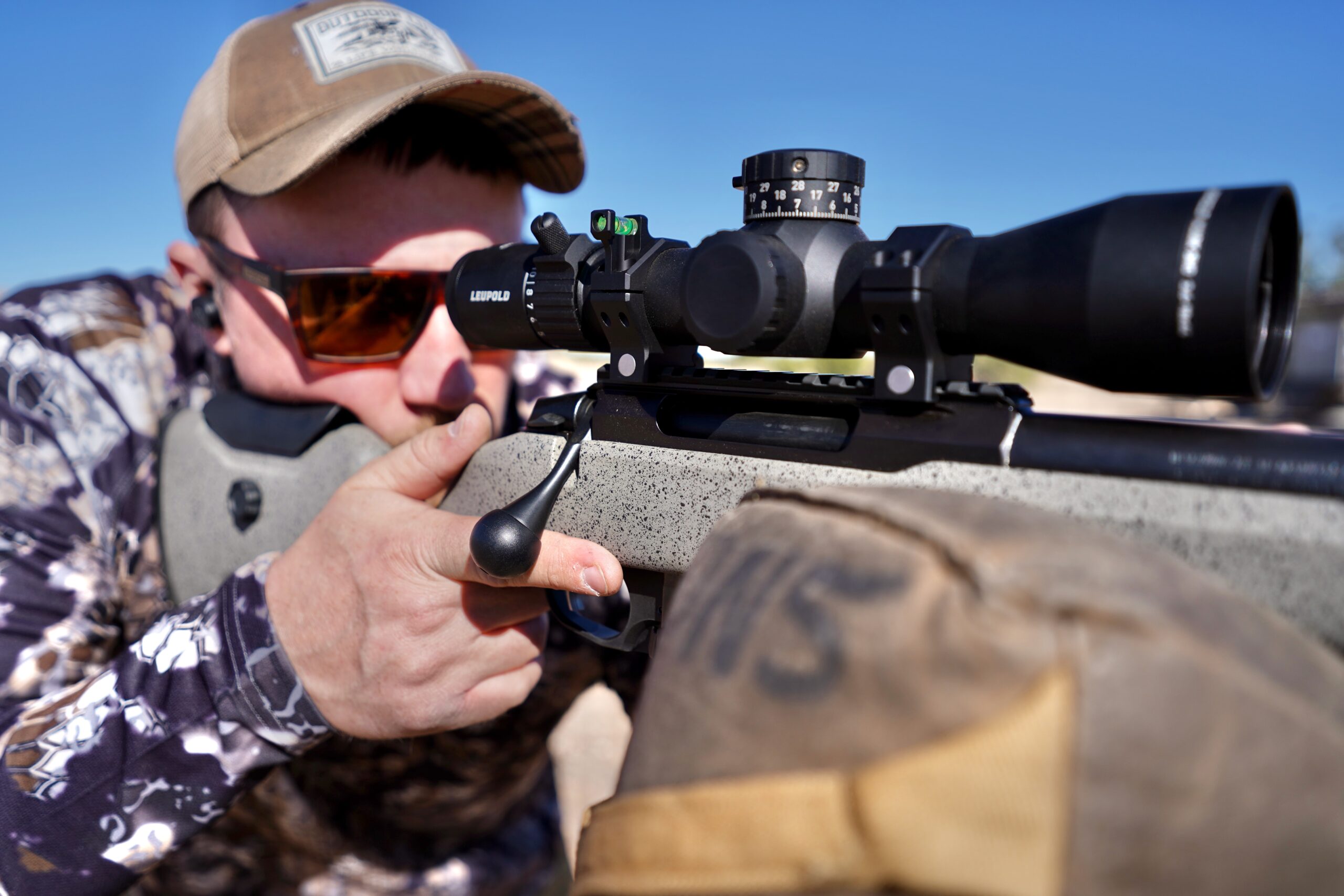
The single-stage trigger on the Tikka T3x UPR is user adjustable, but one has to take the barreled action out of the stock to get to it. That’s done by loosening the two T25 Torx head guard screws on the bottom metal.
Once the action is free from the stock it’s easy to locate the adjustment screw on the front of the trigger housing. It takes a 2mm hex wrench and, by turning it counterclockwise, you can lower the weight of the trigger pull significantly.
From the factory, the trigger on my sample was set at 3 pounds 13 ounces, not exactly an ideal weight for precision rifle work, but is fine for hunting and general shooting.
Out of sheer laziness (and the fact that I’ve had another couple dozen rifles to test this year) I didn’t bother to alter the trigger weight on the rifle prior to my evaluation. Which, in all honesty, makes its sub-3/4 MOA performance on paper at 100 yards even more impressive.
While the trigger was as crisp and positive as I could desire, the excessive break weight always bugged me. I finally got around to backing out that adjustment screw and wish I had done it first thing.
The trigger pull shed more than two pounds and now sits at a consistent 1 pound 12 ounces. I have no doubt that will help the rifle shoot better from here on out, particularly from the positions shooters encounter in NRL Hunter matches.
Two-Lug Action
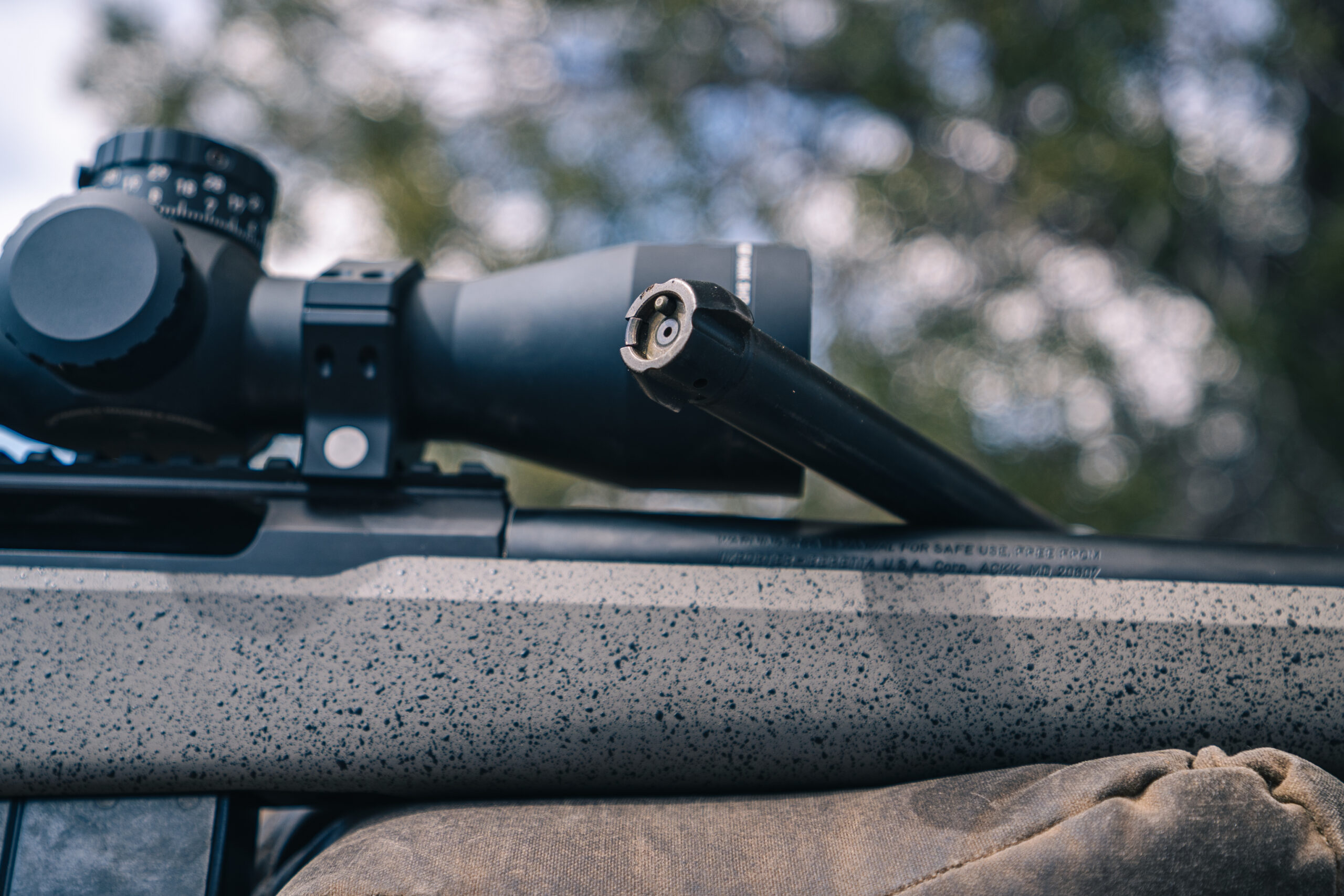
The action on the Tikka T3x UPR has a two-lug bolt with a Sako extractor and plunger ejector. The bolt face is recessed, and surrounds and supports the case head except where it is cut to accommodate the small spring-loaded claw extractor.
20 MOA Picatinny Rail
The top of the action has a full-length Picatinny rail that attaches with four fasteners. Depending on the specific model, that rail is either dead flat or has 20 MOA of declination built into it. I opted for the 20 MOA rail, which is better for long-range work.
Solid Bolt
The bolt body doesn’t have any fluting or other cuts machined into it—it is just a solid tube. Fluting can help a bolt run more smoothly (and can enhance a rifle’s looks), but the UPR doesn’t need help in this regard.
The bolt glides fluidly in its raceway, even after long shooting sessions. Though if it gets really filthy, all it takes is a shot of brake cleaner followed by a quick wipe with an oiled rag to return it to pristine operating condition.
Oversized Bolt Handle
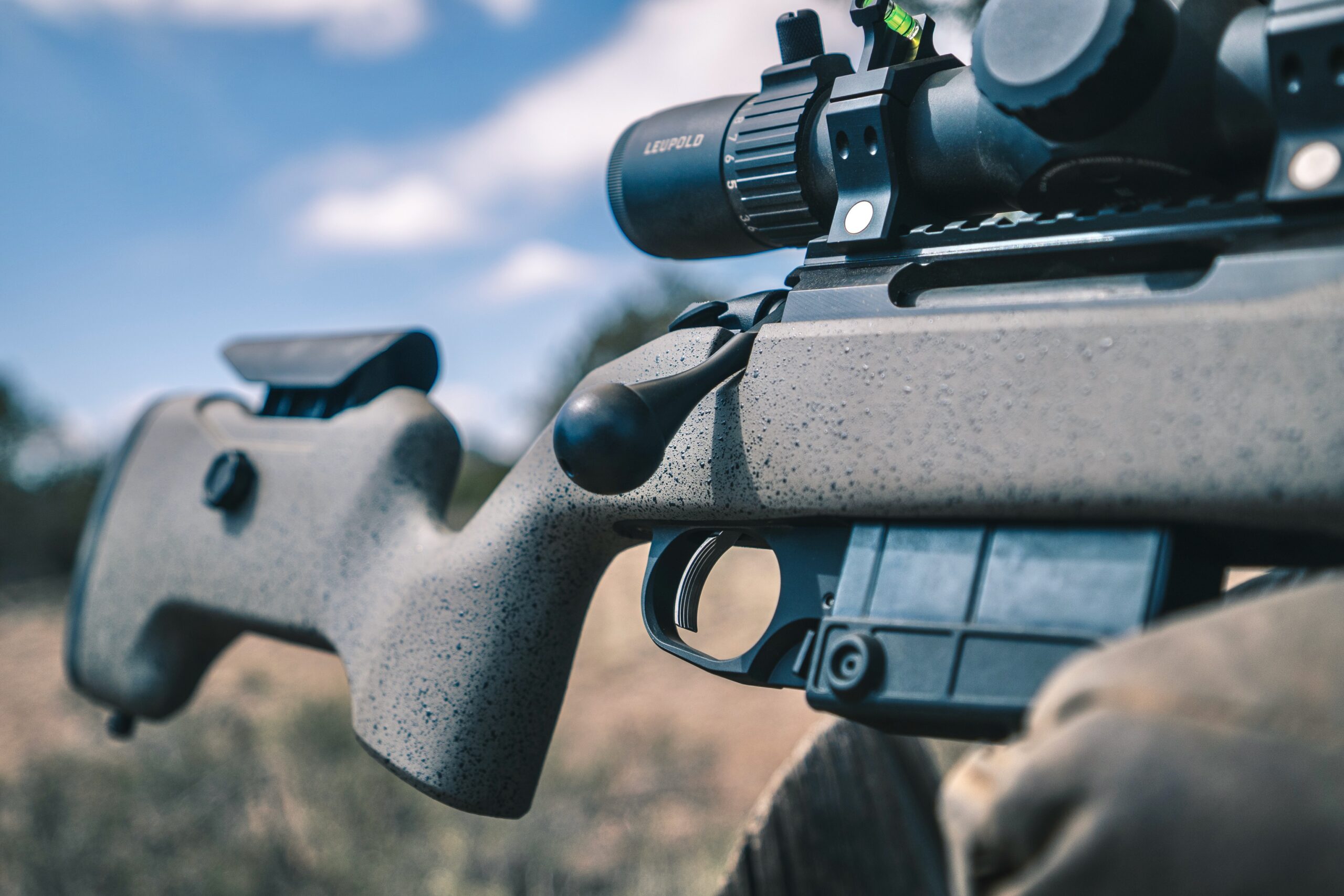
The handle on the bolt has a smooth, oversized round knob that’s easy to grasp. In turn, this facilitates fast and positive manipulation of the action. That’s a fancy way of saying you can dump a 10-round mag in short order with the UPR.
Two-Position Safety
The safety locks the bolt shut in the “safe” position, which is desirable because it prevents the action from opening when you want it to remain closed—as when stalking through timber and brush or rucking from one stage of a match to another.
The safety toggles back and forth smoothly without undue effort and operates intuitively. The fine lines cut into the tab give the thumb solid points of contact. When pushed forward, the safety reveals a red dot giving a visual cue to the rifle’s “hot” status. There’s also a red dot on the firing pin that comes into view when the rifle is cocked.
Bolt Release Tab
The bolt release tab is located on the left side of the action. Pushing down on the tab lifts the forward end of the tab which has a small protrusion that limits the bolt’s reward travel. (The protrusion engages the backside of the left-hand lug on the bolt.) It requires a firm, deliberate push to activate, but once done the bolt slips free.
Unlike some bolt-release mechanisms, you don’t need to push the button to reinsert the bolt. Just guide the bolt head into the raceway and run it forward. The lugs slide over the protrusion with an audible click, signaling that the bolt is secure in the receiver.
Bottom Metal and Magazine
As much as it pains my red-white-and-blue soul to admit this, the detachable magazines on European rifles are often superior to those produced domestically. They tend to load more easily, run more smoothly, and exhibit fewer glitches than their American-made counterparts. And if I had to rank the best magazines from across the pond, I’d put those made by Sako and Tikka, along with Accuracy International’s superlative AW magazine, at the top of the list.
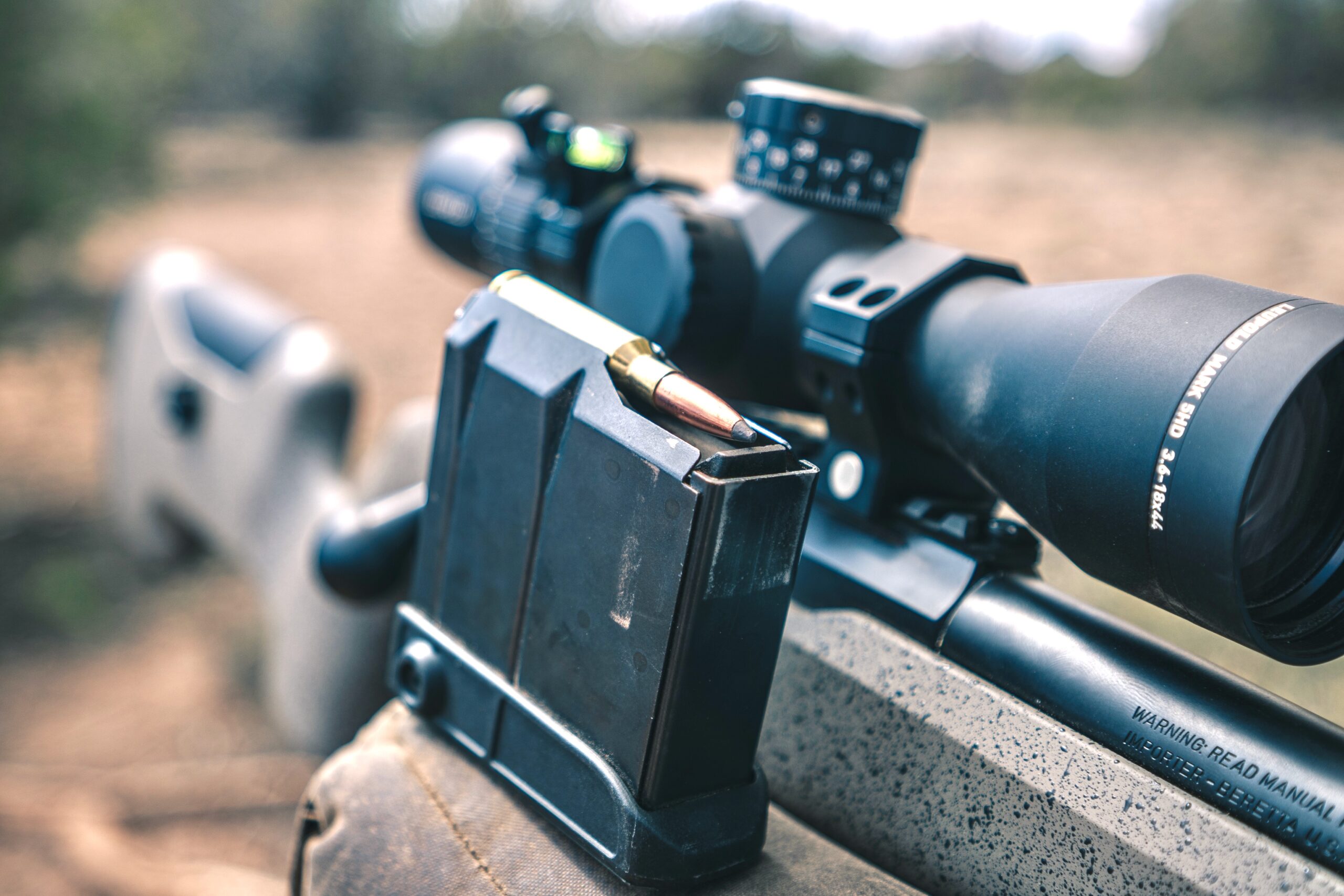
The 10-round magazine on the Tikka T3x UPR is similar to AICS style magazines in that it is a double stack magazine that feeds the top round from the middle. I had no difficulty loading it to capacity, which isn’t a given with some magazines.
The magazine has a steel body and polymer floorplate that is permanently attached to it. To service the magazine, you tilt the rear of the follower down (the end where the case heads sit) and when the angle is steep enough slide the forward part of the follower out past the feed lips. Keep working the follower out of the magazine until it—and the spring that is attached to it—comes free. Putting the magazine back together again is even easier. Simply reverse the process.
Solid Bottom Metal
The bottom metal contains the trigger guard, magazine well, and magazine release tab. It sits flush and even within the inletting cut in the stock. There is nothing ornate in its design, but the quality of the fit and finish is very good.
The trigger guard incorporates a nicely executed paddle magazine release. The trigger guard is hogged out a bit where the mag release is located, giving an index finger or thumb good access to the tab. I like this design because it eliminates the need to have the tabs stick out like Mickey Mouse’s ears, which makes them more prone to snagging on things and gives them a goofy look. (That’s it with the Disney metaphors.)
As with the safety, the surfaces on the tab (one on each side of the trigger guard) have striations cut into them, giving whichever digit the shooter employs a nice contact area. When the tab is pushed forward, the magazine drops free—even when empty and when the rifle’s muzzle is angled sharply upward.
The magazine well isn’t beveled at all, but because the magazine itself is tapered, it seats easily and clicks into place in a positive and effortless manner.
Metalwork and Fit and Finish
There isn’t a whole lot to say here other than that Tikka did a very good job with the coatings on the metal and the rifle’s fit and finish.
The matte black coating on the barrel and action is even and smooth, and has withstood a fair measure of abuse without looking any worse for the wear. All the components on the rifle snug together cleanly with no uneven gaps or misaligned parts.
Accuracy in the Field
Even though the Tikka T3x UPR isn’t a new rifle, I brought it along to this year’s evaluation of the best rifles and best handguns that we conducted at Gunsite in early April. We shot it along with all the other rifles in the test and gathered a lot of data on its accuracy and handling.
Legit .5 to .6 MOA Precision
While at Gunsite we put six different 6.5 Creedmoor loads through the rifle, all of which it repeatedly shot sub-MOA groups with. Four of the loads did particularly well in the rifle. Those included Federal’s 135-grain Berger Hybrid Hunter, Freedom Munitions’ 140-grain BTHP, and Hornady’s 140-grain ELD-M and 143-grain ELD-X. When popping off with those from a prone position the UPR printed a steady flow of groups in the .6s.
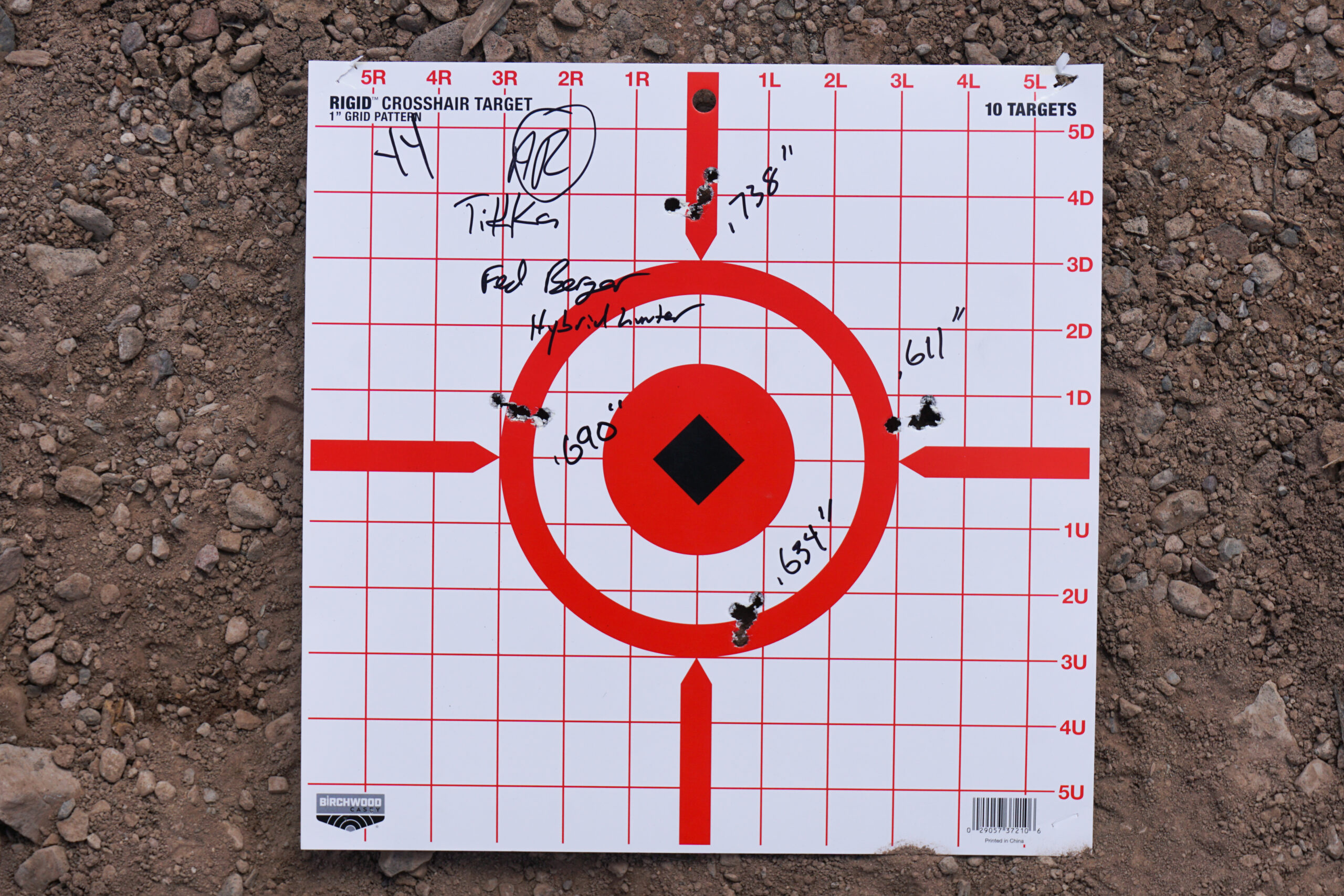
A few weeks after the test I put a bunch more ammo through the rifle—more of the Hornady factory 140 ELD-Ms and a few groups of some Peterson Cartridge ammo also loaded with the 140 ELD-Ms.
I shot the Hornady 140s even better—with 5-shot groups averaging .566 inches. That ammo was also consistent, shooting at 2640 fps with extreme spreads in the 20s and 30s and SDs ranging from 8.9 to 13.3. That’s good enough to win any NRL Hunter Match—and indeed just about any other long-range match—you might sign up for.
The Peterson Cartridge ammunition, even though it was shooting the same 140-grain ELD-M bullet, didn’t perform as well. Its groups averaged .808 inches, which isn’t bad, but not on par with the other factory ammo I shot. That load ran a touch hotter (2656 fps) and had a slightly higher average ES (33) and SD (14.4).
Tikka T3x UPR General Handling and Performance
Everyone loves accurate rifles, so it would be difficult not to warm up to the T3x UPR on that account alone. But the rifle’s appeal extends well beyond its ability to stack bullets on top of each other at 100 yards.
When you combine a well-designed stock and a smooth-running action in a rifle with intuitive and ergonomic controls you have the ingredients to create a potion with some ballistic magic.
Read Next: The Best Gun Cases
That’s exactly what the Tikka T3x UPR accomplishes. The shooter’s experience behind the gun is immensely satisfying. While locked into the stock and shooting from prone positions or off barricades, the rifle recoils straight back so that the shooter can maintain a sight picture and spot impacts. I found that movement predictable and easy to control.
The minimal effort required to cycle the rifle and the surefooted way the rifle ejects and feeds subsequent rounds also let the shooter stay on target and quickly follow up with more shots.
Surprisingly Nimble
All this is in the context of the rifle’s weight, which at 7 pounds 14 ounces, is on the light side for any precision rifle and puts it squarely in the company of many big-game hunting rifles.
With the Leupold Mark 5HD 3.6-18×44 mounted—which happens to be one of the best options for NRL Hunter shooters who want a fully capable optic that doesn’t require a trip to Laos to sell a kidney—the rifle weighs 9 pounds 11 ounces.
This leaves a fair bit of room for the shooter to add a quality bipod and muzzle device while remaining under the 12-pound limit set out in the NRL Hunter factory division. It also means you end up with a rifle that is portable and maneuverable.
Without a muzzle device or bipod attached, the rifle’s balance point is right in front of the magazine well. I shot my UPR with a couple different suppressors—the Silencer Central Banish Backcountry and the Thunder Beast Ultra-7—and attached a Harris bipod. Predictably, this made the rifle more muzzle-heavy, but it never felt unwieldy in my hands.
If you want to improve the rifle’s balance with a suppressor you have the option of going with a 20-inch barrel rather than the 23.7-inch tube I have on my UPR.
Tikka T3x UPR Pros and Cons
Pros
- Excellent accuracy
- Outstanding shootability and handling
- Reliable
- Great value
Cons
- The T3 UPR doesn’t fall short in any meaningful way
Final Thoughts on the Tikka T3x UPR
Everyone on the Outdoor Life gun test team had good things to say about the T3x UPR. Given that the team represents a diverse set of perspectives—it includes Alaskan big-game hunters, Western long-range specialists, and Northwoods deer hunters—that speaks to the rifle’s broad appeal.
The impression the Tikka T3x UPR leaves you with is that of a professional-grade tool that is responsive, accurate, durable, and will excel at any task you ask of it.

